 |
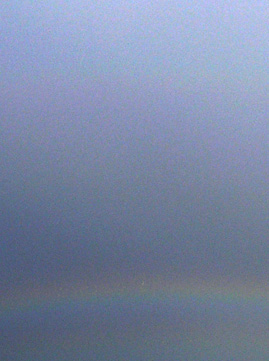 |
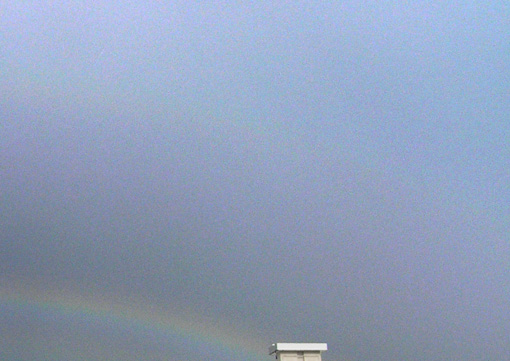 |
|
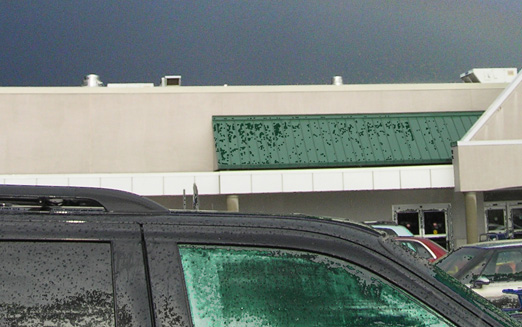 |
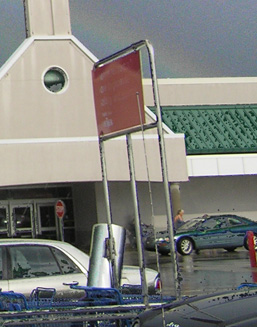 |
||
|
|
|
|
|
| Twinned Rainbow? ~ Three enigmatic rainbows captured by Adam Kraft at Jackson, Michigan. ©Adam Kraft, shown with permission. |
| Three bows. An upper, normal, secondary bow and two primaries where there should only be one.
The lower bows could be a �twinned� bow. If so this is the clearest and most widely separated example that we have. Twinning is rare. It is mostly associated with heavy showers, sometimes with hail, during windy, stormy weather. But it was calm when these images were taken with the rain not particularly heavy. All the bows appeared for only a minute. Sunlight at the camera location was weak. The early evening sun was 24.7� high. Could the bows be made by reflections instead? There was only a small patch of water 1 km away and not quite sunwards of the camera, none anti-sunwards. Anyway, sunlight reflected from horizontal surfaces cannot produce a bow in the required position. Neither can wet sloping roofs unless - highly unlikely - the middle bow was from a large roof area inclined at ~23�. The cause of �twinned� bows is not known. Ice balls or ice inside raindrops have been invoked but that improbably requires not hailstones but near optically perfect and transparent ice spheres. Another explanation is that the bows are made by two sets of drops of different shapes, perhaps in spatially separate showers. Small drops and large drops would do. Surface tension keeps small drops tightly spherical, large drops are not so constrained and can be flattened by air resistance or even oscillate wildly. Flattened drops would (if optically even) give an oval primary rainbow. The separation between its top and that of the normal bow depends on the drop flattening. At right is a simulation made by numerical tracing rays through a mixture of spherical and flattened drops. The flattening is only 2.5% yet it gives well separated primaries. Secondary bow rays pass between less distorted parts of the drop and the secondary is not twinned. Gross enhancement of the Michigan images does not show a doubled secondary. However, distorted drops are a less than entirely credible explanation. A whole shower of raindrops is needed with almost the same degree of flattening. Varied flattening would give at most a smudge of light. There are other problems including the appearance of supernumeraries. We have unlikely explanations. But then twinned bows are unlikely too. We are unsure. |
 |
 |
 |
|
 |
 |
||
|
|
|
|
|

| About - Submit | Optics Picture of the Day | Galleries | Previous | Next | Today |
|
|
|
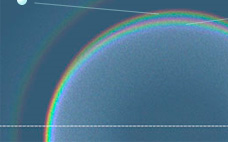 |
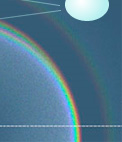 |
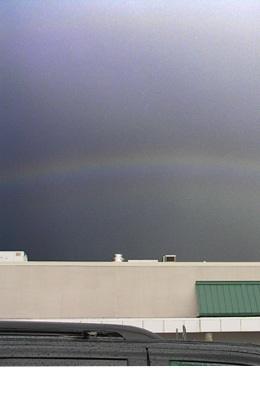 |
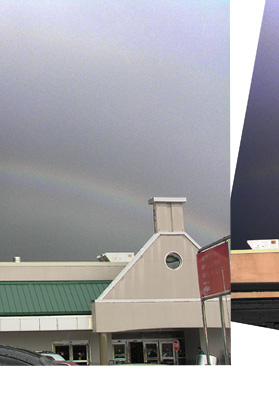 |
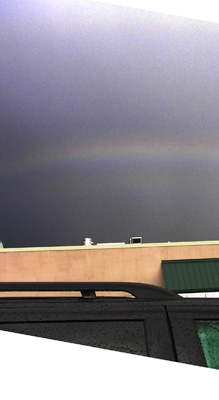 |
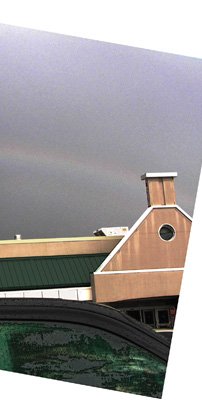 |